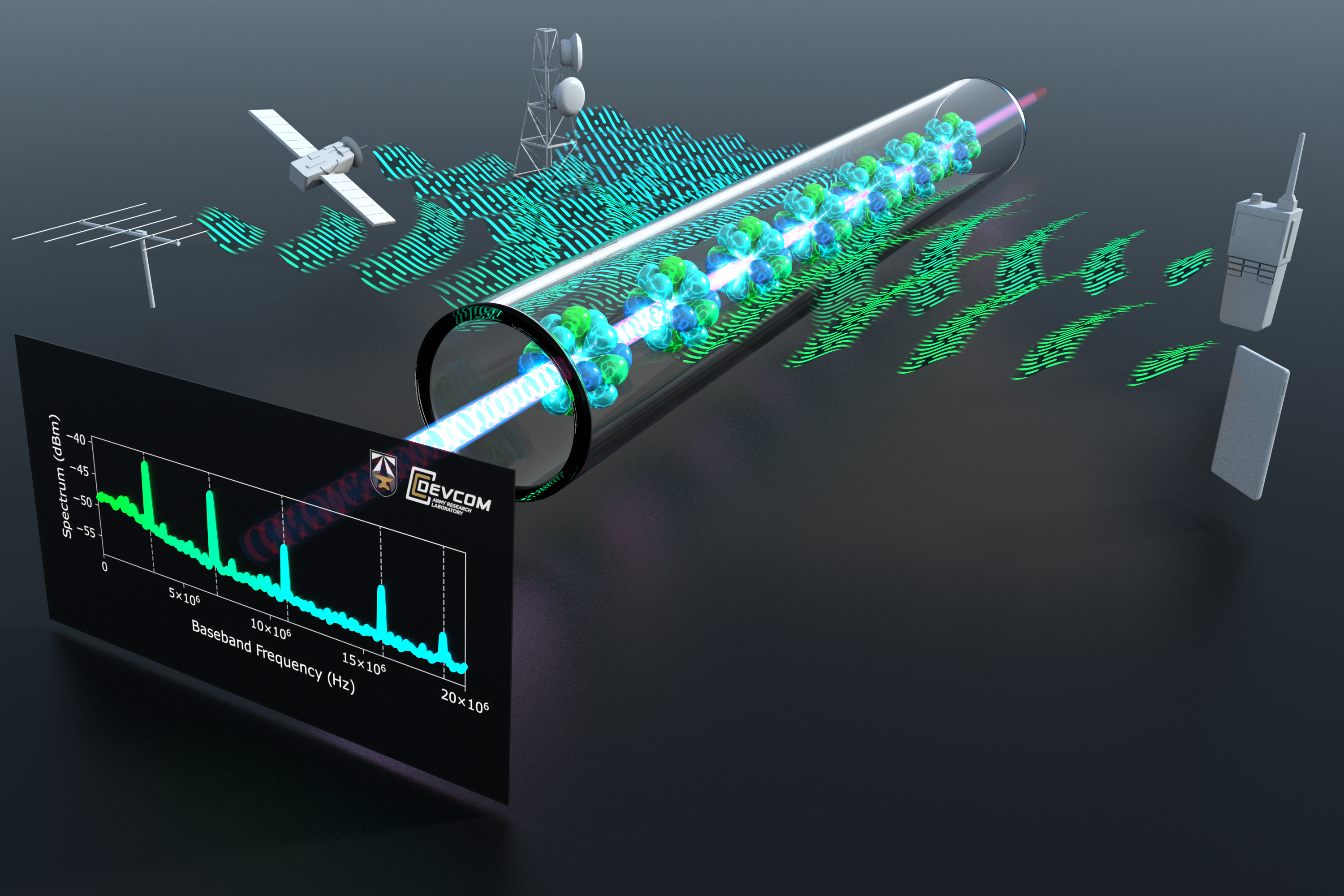
Artist’s rendition of the multi-tone Rydberg sensor. Lasers excite atoms in a glass vapor cell to high energy Rydberg states which are sensitive to RF fields. Modulations of the RF fields induced modulations on one of the optical fields, which is detected to measure the incoming field.
Recent work uses a quantum sensor to simultaneously receive five radio-frequency (RF) signals covering 120 gigahertz (GHz) of the electromagnetic spectrum. This demonstration expands the boundaries of wireless communications, highlighting a unique capability difficult to achieve with other technologies.
Optimizing high performance compact quantum sensors is key to developing next-generation technologies with the potential to surpass their traditional counterparts, such as electronic-based receivers. One such quantum sensor is the Rydberg electric field sensor. These devices exploit the exaggerated properties of atoms excited to high-energy Rydberg quantum states. The excited atoms are dramatically more sensitive to radio-frequency electromagnetic fields. Such fields underlie wireless communication technologies including radio, GPS, and cellular services. By optically interrogating the Rydberg atoms with multiple lasers, information in the radio-frequency fields can be detected.
Exploiting the unique quantum aspects of Rydberg sensors allows for feats that are not possible for traditional receiver systems. One such feat is receiving multiple independent communication channels, spanning a significant portion of the electro-magnetic spectrum, with a single device.
This work combines previous efforts showing the ultra-wideband operational range of the Rydberg sensor and its natural ability to demodulate RF signals via RF heterodyne techniques to achieve simultaneous reception of RF signals spanning from 1.7 to 116 GHz, representing more than six octaves of the electro-magnetic spectrum. The primary challenge to overcome was how to combine these features of Rydberg sensors, such that the output faithfully reproduced each signal.
A typical Rydberg sensor relies on RF fields that are resonant with an atomic transition. This provides the highest sensitivity, but applying multiple resonant fields leads to nonlinear sensor operation. By instead using fields that are merely close to atomic transitions, this work exploits a feature of the atomic response known as the AC-Stark effect that allows for linear sensor operation in the presence of multiple RF fields. A linear response greatly simplifies the post-processing of transmitted data content from the sensor’s behavior.
The peer-reviewed journal Physical Review Applied published these findings as, Simultaneous Multiband Demodulation Using a Rydberg Atomic Sensor, co-authored by DEVCOM Army Research Laboratory researchers Drs. David Meyer, Joshua Hill, Paul Kunz, and Kevin Cox (who is also a University of Maryland Quantum Technology Center fellow).
This research was partially supported by Defense Advanced Research Projects Agency (DARPA)’s Quantum Apertures (QA) program which aims to develop portable and directional radio frequency receivers to equip future DoD missions with greater sensitivity, bandwidth, and range than any traditional receiver.
Distribution Statement A: Approved for Public Release, distribution unlimited